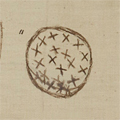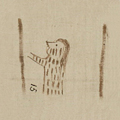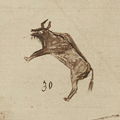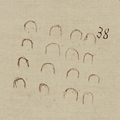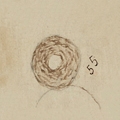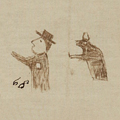Glyph 30 | Year 1852
Matȟó Wašté ečíyapi ptehíko
(Bear Good called-them-by-name bison-to-attract)
Good Bear called the bison.
Elsewhere in the world:
Harriet Beecher Stowe published Uncle Tom's Cabin in Boston, Massachusetts
Bison were historically an integral part of Plains Indian life and culture. Many tribes relied on bison meat not only as a source of food but the hide as material for tipis, clothing, moccasins and other objects and the remainder of the body found many uses as well. Because of their role as life and gift givers, Native nations continue to hold bison in high regard and are considered sacred relatives. They also served as a community model by demonstrating valuing every member, respecting male and females, and using resources carefully. Songs, dance and prayers are used to honor them.
At one time, there were anywhere from 30 to 100 million bison on the Plains, serving as the basis for Plains Indian livelihood. However, the construction of the trans-continental railroad brought non-Native settlers who made a sport of shooting buffalo from trains, leaving their bodies to decompose across the Plains and intentionally depriving Native people of their life source. Fewer than 1,000 remained by the 1890's.
Today, tribal nations are working to reestablish healthy bison herds in their communities, many working through collaborations such as the Inter Tribal Bison Council.
This glyph remembers a year when Good Bear, a member of the community who was likely a spiritual leader, probably did a ceremony to ensure the presence of bison for that season.

